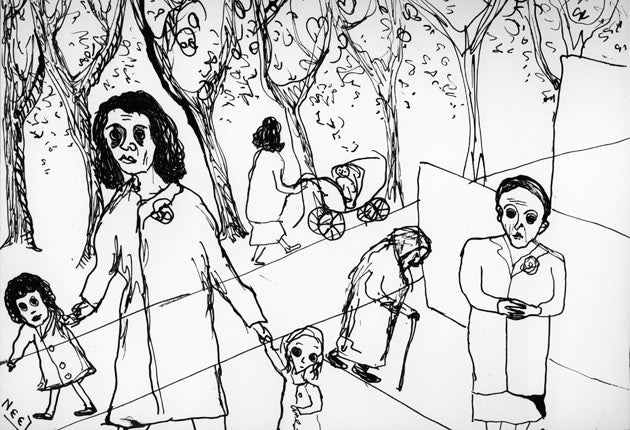Alice Neel: Works on Paper, Victoria Miro, London
The baring of lives and souls

Drawing," wrote the American painter, Alice Neel, "is the discipline of art." One of the great painters of the twentieth century, she was a pioneer among women artists; a representational painter of people, landscape and still life in an era dominated by the essentially masculine language of Abstract Expressionism.
Clement Greenberg, the high priest of formalism, had insisted that the canvas be freed of all personal narrative, autobiography and literary content. Influenced by Expressionism and Realism, Neel overtly disobeyed this mantra of Modernism. Against this background of heroic male art she made sense of the world through an essentially female gaze that encompassed the body and personal emotion. She was not, she said, against abstraction, but could not stand that the Abstractionists had "pushed all the other pushcarts off the streets."
What she produced were images of friends and lovers, poets, celebrities and the poor – Hispanics, blacks and the elderly – from Spanish Harlem where she chose to live in line with her strong social conscience and left-wing beliefs. Her cast of characters was portrayed with an incisiveness that was never clouded by sentimentality or illusion. Through the body's idiosyncrasies and vulnerabilities she revealed, with searing honesty, the psyche and soul of her sitters, their suffering, endurance, courage and insecurities hidden behind carefully constructed facades. What she captured, in a form of "internal portraiture", was the inner texture of their lives. "Every person," she said, "is a new universe, unique with its own laws emphasising some belief, a phase of life immersed in time and rapidly passing by."
Now there is a chance to see the first exhibition in this country of her works on paper. Her pencil, ink and gouache compositions from the 1930s to the 1960s include both individual portraits and closely observed scenes of daily urban life. "I love you Harlem," she wrote in her diary, "your life, your pregnant women, your relief lines outside the bank full of women who no dress in Saks Fifth Avenue would fit."
Her stark graphic drawings include a row of old women with dishevelled hair and beaky profiles waiting patiently in line, no doubt, for hand-outs, and another of three black women on a bus. With its acute observation it is a prize example both of her compassion and honesty. Executed in soft pencil on paper it shows them in their veiled church hats and gloves staring out at the viewer, isolated, proud, dignified and afraid. Fundamental to her expression is her use of line, which at first glance appears casual but is, in fact, the product of great awareness. In these drawings we are allowed to see a record of her creative process in its most immediate and intimate form.
There is also an intense life-sized drawing of the American feminist poet Adrienne Rich with her awkward face and two ink-on-paper portrayals of Walter Gutman, the New York stock- market analyst and patron of underground art films that are almost caricatures, showing him as a squat impresario dressed in a tight raincoat holding his homburg, with a lid of lank hair flipped over his balding patch.
She also has great sensitivity to children. Her pencil drawing of a young girl done in 1930 not only evokes the finesse of Picasso's early drawings but reveals the vulnerability of this short moment just before puberty. With her hair in plaits, and dressed in a polka- dot swimsuit that reveals her still flat nipples, the girl in this little drawing is a study in poignancy, while the children in the park, executed in pen and ink, have the blank stares and empty eyes that evoke the existential alienation of Munch and emphasise Neel's belief that "Death, the great void of life, hangs over everyone."
Until 14 May
Join our commenting forum
Join thought-provoking conversations, follow other Independent readers and see their replies
Comments